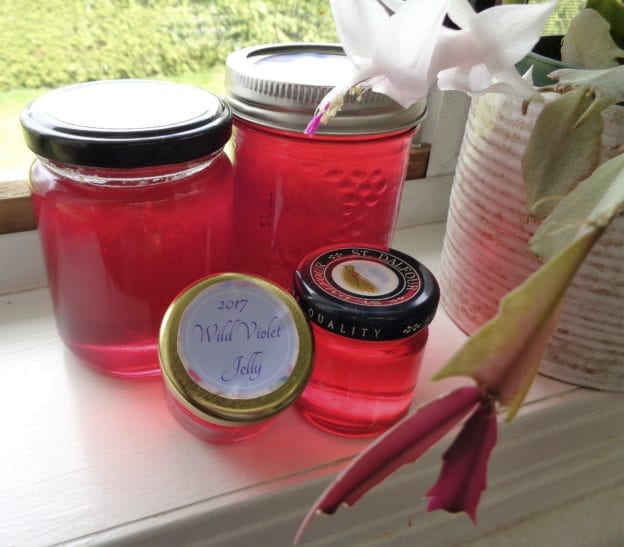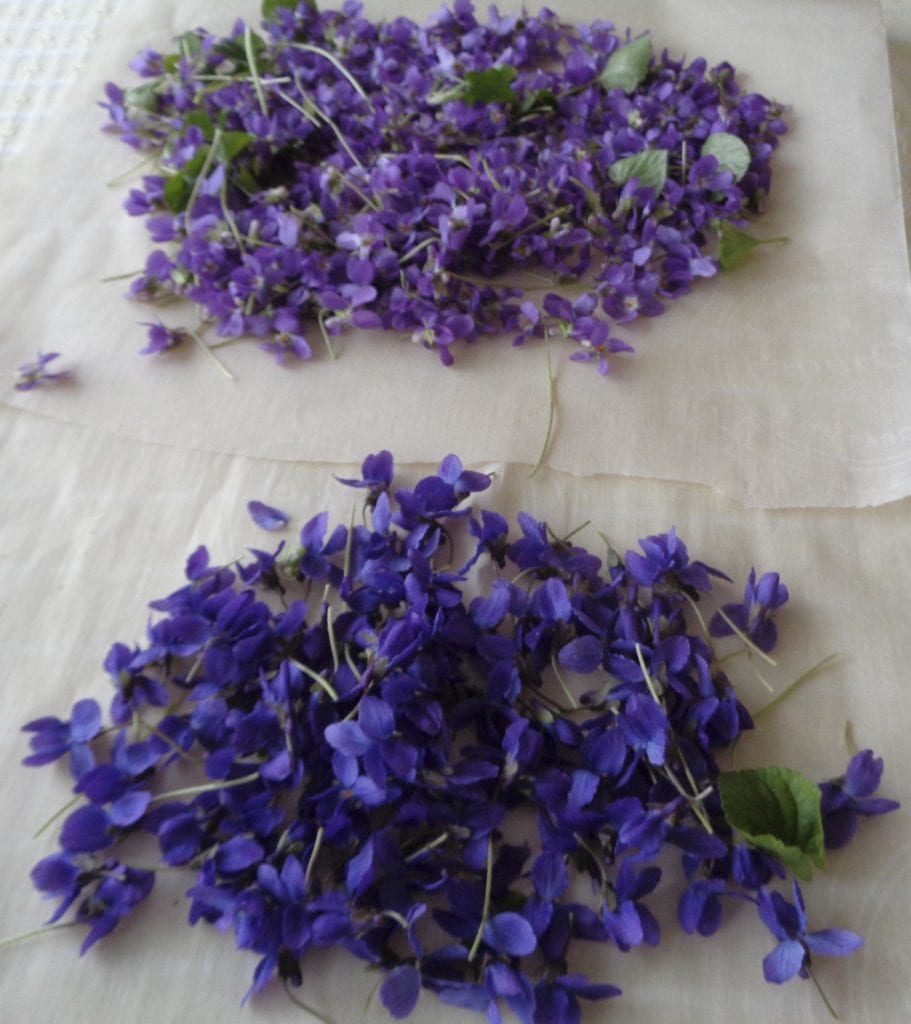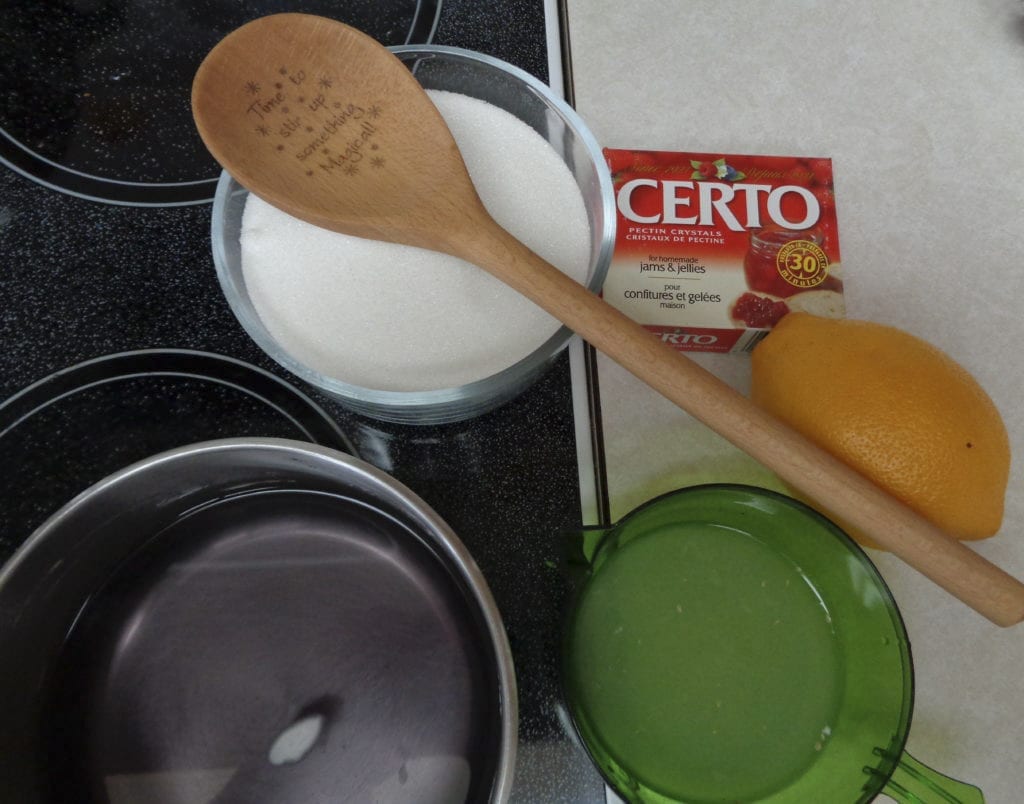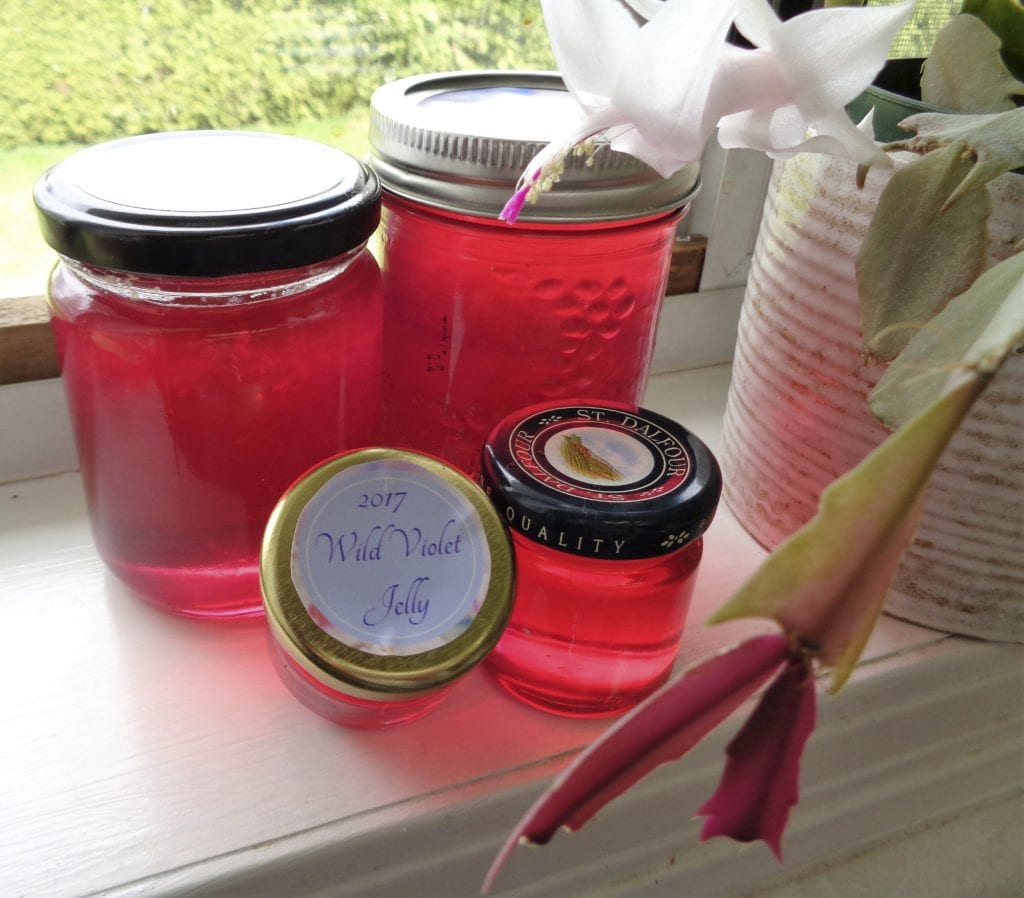Before the last of the violets were washed away by all our liquid sunshine, I had to make a choice; vinegar, jelly or syrup?
Deciding I could squeeze small amounts of two out of three, the vinegar would need to wait until next year as I can already see the first crop of dandelions opening bright yellow happy flower heads and yesterday the first of the rhubarb was at the farmer’s market. (Cue the happy dance!)
The last of the blossoms ( 2 tightly packed cups ) went into a clean glass container and 2 1/2 cups of boiling water were poured on top. Then everything got to sit covered overnight.
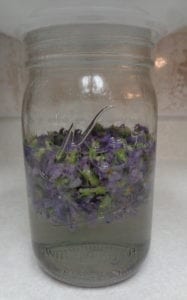 In the beginning the water is pretty pale but as time goes along the shading changes and by the following day a lavender to deep purple tone is definitely visible.
In the beginning the water is pretty pale but as time goes along the shading changes and by the following day a lavender to deep purple tone is definitely visible.
The thing to remember here is that the pretty fuschia/magenta comes from the ph not the original violet water.
If you are lucky enough to have a good supply of dark violets, the finished product will be a darker purple but any violet water will change when the pectin and lemon juice are added while making jelly.
Once the violet water has finished sitting ( give it 24 hours if possible ), strain the mixture through a coffee filter and press out all the liquid from the flowers.
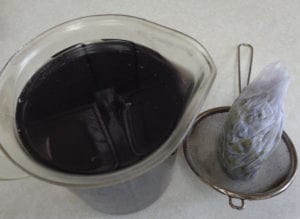 Looking down, through the violet water, it can seem almost black.
Looking down, through the violet water, it can seem almost black.
It isn’t.
Looking at violet water horizontally, as in the picture below, you can see the light purple tone that this batch finished up as.
I divided the mixture into two sections and made a very small batch of syrup, which kept its purple tones as only sugar was added and a batch of jelly which is an eye popping pink.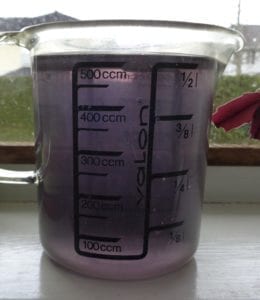
To make the syrup you will need:
2 1/4 cups of white sugar for every cup of violet water
Measure both the violet water and sugar into an appropriate pot and stir over medium heat until the sugar has dissolved.
Skim off the “scum” that has developed as the mixture heats.
DO NOT LET IT COME TO A FULL BOIL
Take the pot off the heat and allow it to cool for about five minutes before returning the pot to the stove and repeating.
Skimming while not letting it boil.
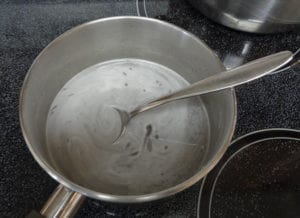 If the plan is to use the syrup shortly, (Beltane/May Day is just around the corner and anything floral is highly appropriate) allow the syrup cool, transfer to a sterile jar and store in the fridge. Plan on using within 3-4 weeks. The depth of colour will depend on shade of blossom and the strength of the original violet water.
If the plan is to use the syrup shortly, (Beltane/May Day is just around the corner and anything floral is highly appropriate) allow the syrup cool, transfer to a sterile jar and store in the fridge. Plan on using within 3-4 weeks. The depth of colour will depend on shade of blossom and the strength of the original violet water.
Adding sugar will also lighten the final product as it adds volume to the final mixture.
Remember that keeping any shade will mean not adding anything tart to the drinks being prepared as acid will effect the syrup and change the colour. Not at all a bad thing, just something to consider when making your choices.
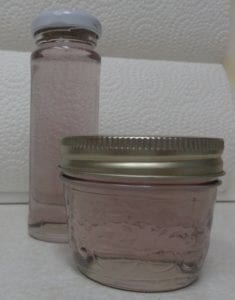 But oh! what fun to have young ones around and watch their eyes as you add the syrup to lemonade and the entire mixture changes to a colour entirely different from any of the ingredients.
But oh! what fun to have young ones around and watch their eyes as you add the syrup to lemonade and the entire mixture changes to a colour entirely different from any of the ingredients.
Your very own Potions 101 class and proof that you are a real kitchen witch!
I tried using this as a tester for ph in soap making just to see if it would work.
It didn’t.
The range of ph that violet water is effected by is not the same as the range soap cures in.
With the remaining violet water I moved on to Wild Violet Jelly.
To make jelly you will need:
the juice of one large lemon
2 1/2 cups violet water
1 package of Certo pectin or something similar
3 1/2 cups sugar
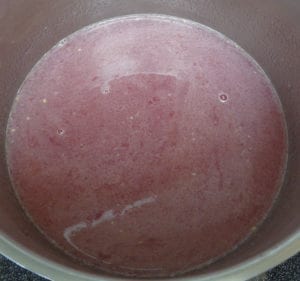 The ratios above were what I used for the jelly just in smaller quantities as I had a limited amount of violet water.
The ratios above were what I used for the jelly just in smaller quantities as I had a limited amount of violet water.
I have not yet found a way to keep the purple tones in the jelly making process. The moment the Certo is added it begins to shift and most definitely when the lemon juice goes in. The lemon juice is needed, just as in blackberry or strawberry recipes to aid the pectin so leaving it out and trying to keep the colour will not work.
The other thing that will change the tone is the type of sugar used.
Opting to move away from white and into something more organic will move the jelly more towards this lovely jewel tone, made last year with Jean’s lighter coloured wild violets.
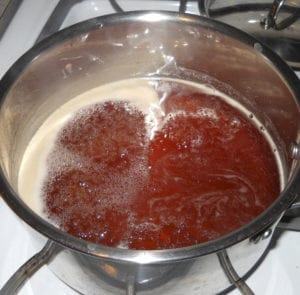 The taste will not change and there is no right or wrong just what you are wanting to achieve.
The taste will not change and there is no right or wrong just what you are wanting to achieve.
Place the violet water and lemon juice in a pot with the sugar and bring to a boil. Add the Certo and stir.
Boil for one minute, skimming to clear the top of scum and then pour into hot sterilzed bottles.
Process as you would normally finish jelly. Water bath, jars into the oven or simply place the hot sealers and rings on jars and allow them to cool and seal at room temperature. The choice is youars depending on how long you wish to store your jelly.
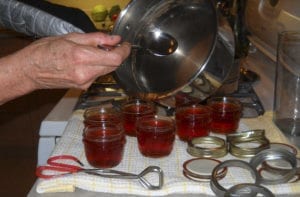 Label and store in a dark cool location. Violets are sensitive to UV light and will loose colour when sitting in daylight for a long time, one of the reasons the syrup above is so light. I was not thinking and left it out on the counter.
Label and store in a dark cool location. Violets are sensitive to UV light and will loose colour when sitting in daylight for a long time, one of the reasons the syrup above is so light. I was not thinking and left it out on the counter.
Admittedly, I don’t go through a lot of wild violet jelly in a year. I like to top tarts with a little spoonful. These were done for a children’s fairy tea several years ago.
 Sunday morning scones is another option with Devonshire cream and proper pot of tea?
Sunday morning scones is another option with Devonshire cream and proper pot of tea?
It is such a unique colour that using using wild violet jelly can really change up a presentation.
Whatever plans you make, please remember that in using natural ingredients, there is no guarantee that what happens one year will happen the next as you can see in the different tones that came out the various batches shown here.
Below is this years small batch which I plan to use on something delicate and floral later in the month, while we gather to celebrate the first day of summer in the Celtic calendar.
Wild Violet Jelly from My Kitchen Wand

